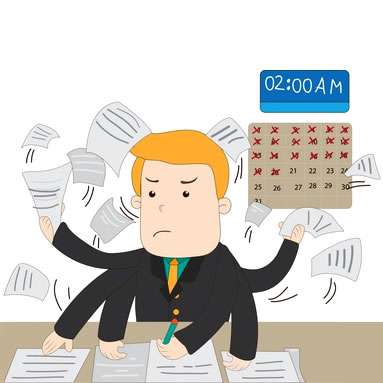No matter how much we want them to be, no project is completely risk-free. Whenever you take on a project, there are several factors that can cause delays, accidents, quality issues, added expenses, and various other difficulties along the way. However, if you have a set risk management plan in the beginning, you can significantly reduce the amount of damage they can cause.

Having a risk management plan also means that you will have a clear idea of how your project might proceed, even if the risks disrupt it for a while. You'll be able to give your client a clear idea on the timeline and prepare them for any extra expenditure down the line.
How to manage and deal with project risks
1. Plan ahead
The best way to deal with potential project risks is to plan for them from the very beginning. You can do this by making risk management a part of your project planning. This way, you'll be able to see potential disasters before they can wreak havoc. If these disasters are truly a surprise, with daily assessment, you're at least prepared to deal with them immediately.
There are some companies that don't have a fixed plan to deal with risk, be they expected or unexpected. They rely on their luck to carry them through and think they'll cross the bridge when they get there.
The problem with such a plan is that you're not prepared to deal with issues when they pop up, even if you were aware of them. That's why it's crucial to have a plan for dealing with risks before you even start working on the project.
2. Identify problems early
When your risk management plan is firmly entrenched in your day-to-day operations, you can spot trouble heading your way before it actually reaches you. However, if unexpected problems arise, you'll still be able to spot them before it's too late.
Identifying the problem early is the best way to prevent or manage the damage it causes. For example, consider a leaking pipe. If you identify a leak early and fix it promptly, you won't see much water damage in the surrounding areas and you won't have to spend too much money trying to fix the damage caused by the leak.
On the other hand, if you're not aware of the leak and it goes unidentified, the water can spread and damage the surrounding walls. However, if you know you have an old pipe that looks rusted and can lead to future leaks, you're better prepared for the eventuality.
This analogy can be easily applied to any situation involving risks. It's very important to identify these earlier and deal with the problem as soon as it occurs. This way, you can contain the damage.
3. Keep communication flowing
A project manager can't be everywhere at once and he's as fallible as any other human being. He might miss signs of risks or problems, which can potentially lead to project failure. Surprisingly, there are times when someone else working on the project does see the problem developing but doesn't report it. Workers might assume that you're already aware of the potential problems and that it wasn't their duty to report any risks that they could spot.
You can prevent this situation by
encouraging communication at all times. During project meetings, you can make risk identification and assessment as part of your agenda instead of just an afterthought. If you actively discuss potential risks and how to deal with them in every meeting, it creates an environment where your workers will freely contribute their thoughts and findings.
It's also important to inform your client about any potential risks. This way, they are better prepared for any problems as well and would respond to suggestions reasonably.
4. Take advantage of risks
Sometimes risks are just hidden opportunities that are waiting to be exploited, things that can easily propel your project forward.
If you plan for unexpected opportunities, as well as unexpected risks, you might benefit from them. Sometimes you just don't have the time to exploit opportunities as you need to focus on risks and meet all your deadlines. Setting aside some time to identify potential risks at the very beginning can help you take advantage of them later on.
5. Prioritise
Not all risks are born equal. Some need to be dealt with as quickly as possible, while some can wait. Some risks can cause ample damage, and some won't. You'll be able to handle risks more efficiently if you start to prioritise them with these aspects in mind.

You need to deal with the more dangerous problems as soon as possible to minimise the damage they can cause. Identify any risks that can delay your project or even bring it to a halt, and deal with them immediately. These kinds of risks need to be on the top of your list. If you organize them according to their impact on your project, you'll be able to deal with them more effectively.
6. Delegate responsibilities
In many cases, companies fail to decide who would need to deal with possible risks in case they arise. This can lead to a lot of problems down the line. If you aren't clear on the division of responsibilities when it comes to risks, you won't be able to deal with them effectively.
Make sure to assign a risk to one particular person on your list – this way, you have someone who will identify and deal with the risk as soon as it occurs. You don't need to spend time trying to decide who's best suited for the task if you've already chosen someone at the beginning.
7. Keep a record of the risks
Another crucial element of managing and dealing with project risks is to keep a record of all the risks you have encountered and dealt with. Not only does it help you to keep your project on track, but it will also ensure a level of transparency. This way, you can show these records to your boss, your clients or other people involved when they ask questions.
Do you know of any other ways to manage and deal with project risks? Let us know in the comments! 

























